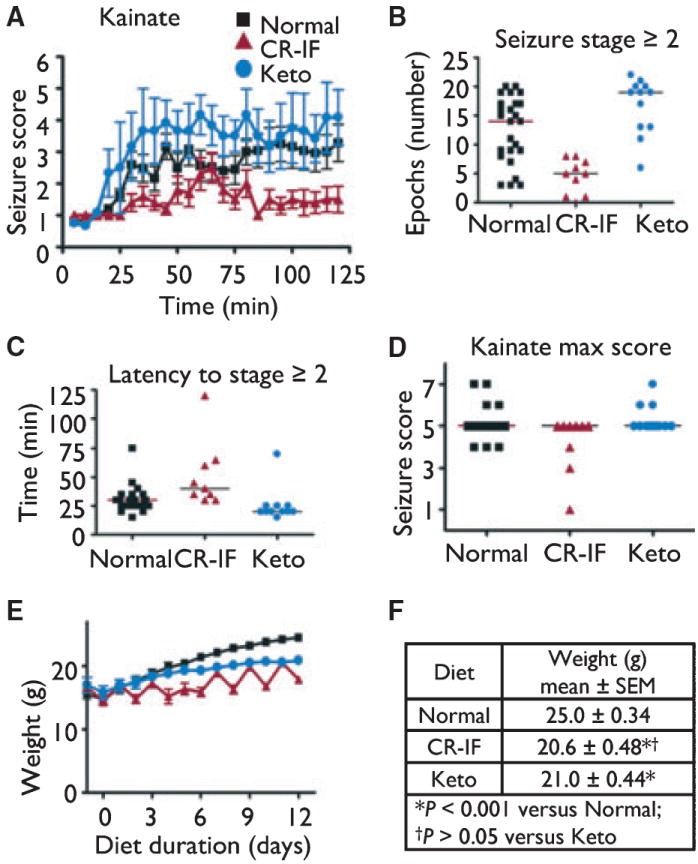Figure 2.

Intermittent fasting (CR-IF), but not the ketogenic diet, protects against seizures induced by kainic acid injected intraperitoneally (i.p.). (A) Mean seizure scores (±SEM) were assessed in 5-min blocks for two groups of weight-matched mice tested independently. Mice were fed as described for Fig. 1; (Normal, n = 25 mice; CR-IF, n = 9; Keto, n = 12). (B) Number of 5-min blocks spent in seizure stage ≥2 for animals in panel A (Normal vs. CR-IF & CR-IF vs. Keto, p < 0.001; Normal vs. Keto, p > 0.05; analyzed by one-way ANOVA with Tukey’s multiple comparison test). Bar represents the group median. (C) Latency to seizure score ≥2 (bar represents group median) for animals in panel A (Normal vs. CR-IF & Normal vs. Keto, p < 0.05; CR-IF vs. Keto, p < 0.001; analyzed by Kruskal-Wallis test with Dunn’s multiple comparison test). Bar represents the group median. (D) Maximum seizure scores for mice in panel A (CR-IF vs. Keto, p < 0.05; Normal vs. CR-IF & Normal vs. Keto, p > 0.05; analyzed by Kruskal–Wallis test with Dunn’s multiple comparison test). Bar represents the group median. (E) Weight of animals shown in panel A (until the first animals were removed for seizure testing). (F) Body weights on the day of seizure testing for mice in panel A, mean ± SEM; analyzed by one-way ANOVA with Tukey’s multiple comparison test.
